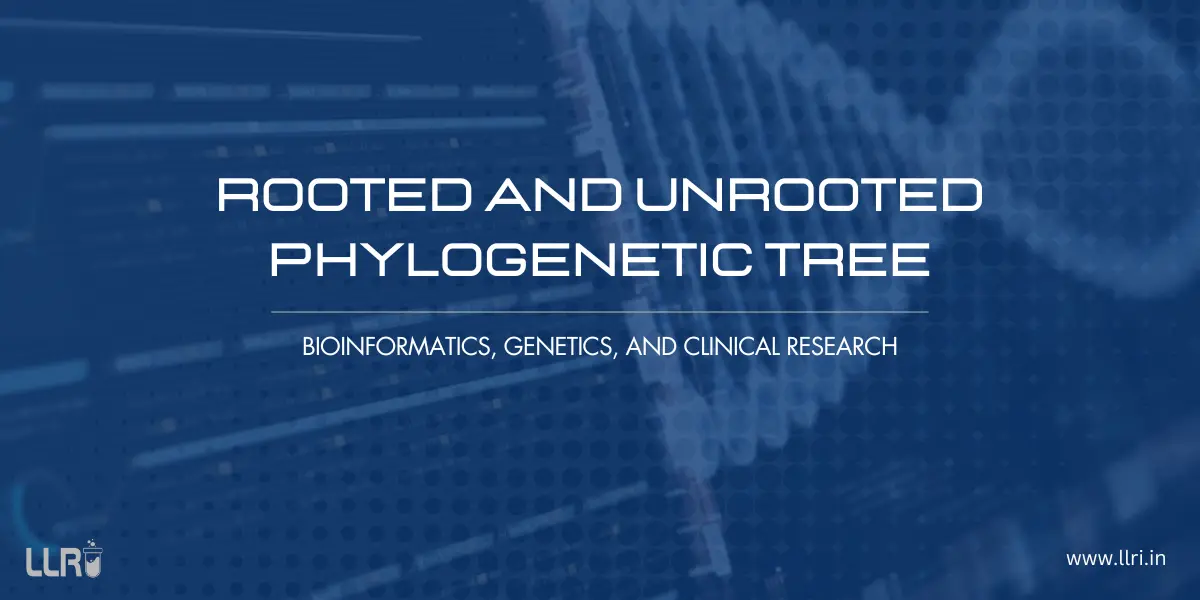Difference Between Rooted And Unrooted Phylogenetic Tree: Phylogenetics is a crucial field in biological research, helping scientists understand evolutionary relationships among organisms. One of the core components of phylogenetic studies is the representation of evolutionary trees.
But do you know the difference between rooted and unrooted phylogenetic tree structures? If not, this blog will give you complete clarity in simple terms.
Understanding what is a rooted phylogenetic tree and what is an unrooted phylogenetic tree is essential for those interested in bioinformatics, evolutionary biology, and even clinical research. If you are considering a clinical research course or planning to join a clinical research institute, mastering phylogenetics can be an added advantage. So, let’s explore the world of phylogenetic trees!
What Is A Rooted Phylogenetic Tree?
A rooted phylogenetic tree is a diagram that represents the evolutionary relationships among species, showing a common ancestor at the base (root). The root represents the oldest common ancestor, while the branches depict the evolutionary paths of various species.

Key Features Of A Rooted Phylogenetic Tree:
✔ The root represents the common ancestor of all species in the tree.
✔ Branches extend from the root to show evolutionary divergence.
✔ The direction of evolution is clear, moving from the root to the tips.
✔ It helps in understanding the chronological order of evolution.
Example of a Rooted Phylogenetic Tree:
A classic example of a rooted tree is the tree of life, which depicts how all living organisms share a common ancestor.
“Rooted trees provide insight into evolutionary history by identifying a single common ancestor.” — (Felsenstein, 2004)
What Is An Unrooted Phylogenetic Tree?
An unrooted phylogenetic tree is a type of tree that shows relationships between species without specifying a common ancestor. It simply represents the connectivity between different organisms but does not indicate the direction of evolution.

Key Features Of An Unrooted Phylogenetic Tree:
✔ No common ancestor is defined.
✔ Shows how species are related but does not depict evolutionary history.
✔ Does not indicate the order of divergence.
✔ Mainly used for comparative studies when the root is unknown.
Example of an Unrooted Phylogenetic Tree:
In studies where scientists analyze genetic similarities without knowing the direct evolutionary path, unrooted trees are commonly used.
“Unrooted trees are powerful tools for comparative genetic analysis.” — (Nei & Kumar, 2000)
Similarities Between Rooted And Unrooted Phylogenetic Tree
Now that we know what is a rooted phylogenetic tree and what is an unrooted phylogenetic tree, let’s discuss their similarities:
✔ Both depict relationships among species. ✔ Both use molecular or morphological data. ✔ Both rely on algorithms for construction. ✔ Both play a role in bioinformatics and clinical research.
Major Differences Between Rooted And Unrooted Phylogenetic Tree
| Feature | Rooted Phylogenetic Tree | Unrooted Phylogenetic Tree |
| Root Presence | Has a common root | No defined root |
| Evolution Direction | Shows evolutionary paths | Does not indicate evolution order |
| Ancestral Relations | Defines a common ancestor | Only shows species relationships |
| Usage | Used for evolutionary studies | Used for genetic comparisons |
Why Understanding Phylogenetic Trees Is Important In Clinical Research?
If you are considering a career in clinical research, understanding phylogenetic trees can be a game-changer. Clinical research training involves analyzing diseases, genetic variations, and drug responses. Many researchers use phylogenetic trees to trace viral evolution (like COVID-19) and develop better treatment strategies.
How Can LLRI Help?
At Learning Labb Research Institute (LLRI), we offer clinical research training programs where you can explore bioinformatics, genetics, and data-driven research methodologies. Whether you are looking for a clinical research training center or searching for the best institute for PG Diploma in Clinical Research, LLRI provides industry-relevant training with practical exposure.

On A Final Note…
Understanding the difference between rooted and unrooted phylogenetic tree is crucial for research in bioinformatics, genetics, and clinical research. While rooted trees help trace evolutionary ancestry, unrooted trees focus on genetic relationships. Both are vital for modern scientific studies, including clinical research training and disease mapping.
If you are looking to enhance your expertise in clinical research, consider enrolling in a clinical research course at LLRI. Our programs are designed to help you build a strong foundation in research methodologies, ensuring you get hands-on training in the field. Plus, our clinical research course fees are affordable, making it accessible for all students.
So, are you ready to learn about the world of clinical research? Join LLRI today and kickstart your career in clinical research!

